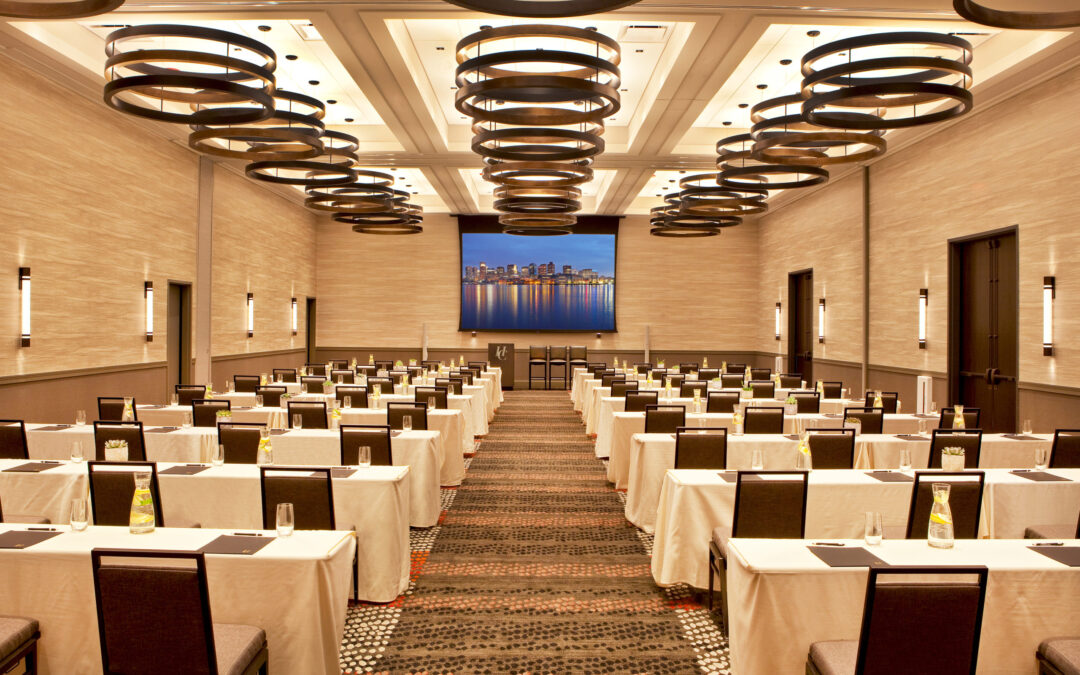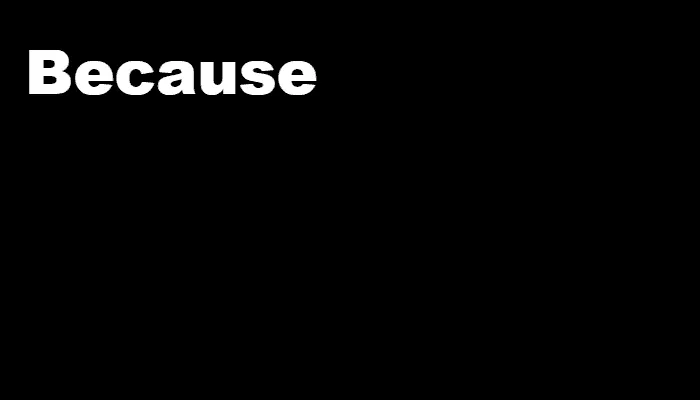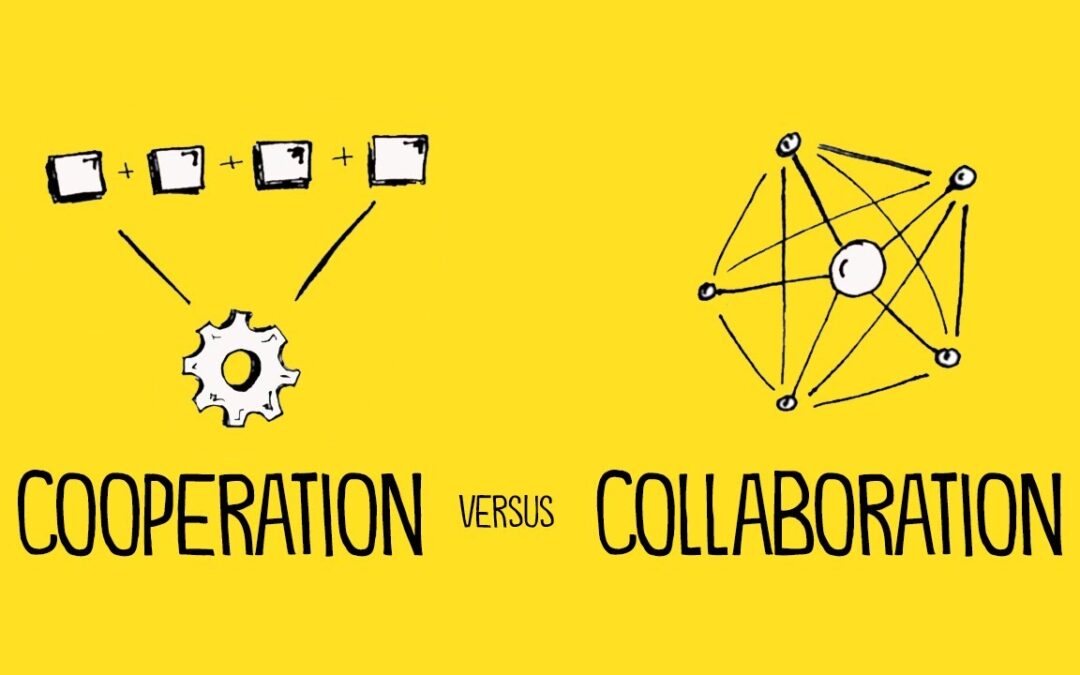
by Robyn Bolton | Nov 12, 2024 | Customer Centricity, Leadership, Stories & Examples
“Now I know why our researchers are so sad.”
Teaching at The Massachusetts College of Art and Design (MassArt) offers a unique perspective. By day, I engage with seasoned business professionals. By night, I interact with budding designers and artists, each group bringing vastly different experiences to the table.
Customer-centricity is the hill I will die on…
In my Product Innovation Lab course, students learn the innovation process and work in small teams to apply those lessons to the products they create.
We spend the first quarter of the course to problem-finding. It’s excruciating for everyone. Like their counterparts in business and engineering, they’re bursting with ideas, and they hate being slowed down. Despite data proving that poor product-market fit a leading cause of start-up failure and that 54% of innovations launched by big companies fail to reach $1M in sales (a paltry number given the scale of surveyed companies), they’re convinced their ideas are flawless.
We spend two weeks exploring Jobs to be Done and practicing interviewing techniques. But their first conversations sound more like interrogations than anything we did in class.
They return from their interviews and share what they learned. After each insight, I ask, “Why is that?” or “Why is that important?
Amazingly, they have answers.
While their first conversations were interrogations, once the nervousness fades, they remember their training, engage in conversations, and discover surprising and wonderful answers.
Yet the still prioritize the answers to “What” over answers to “Why?”
…Because it’s the hill that will kill me.
Every year, this cycle repeats. This year, I finally asked why, after weeks of learning that the answers to What questions are almost always wrong and Why questions are the only path to the right answers (and differentiated solutions with a sustainable competitive advantage), why do they still prioritize the What answers?
The answer was a dagger to my heart.
“That’s what the boss wants to know,” a student explained. “Bosses just want to know what we need to build so they can tell engineering what to make. They don’t care why we should make it or whether it’s different. In fact, it’s better if it’s not different.”
I tried to stay professional, but there was definitely a sarcastic tone when I asked how that was working.
“We haven’t launched anything in 18 months because no one likes what we build. We spend months on prototypes, show them to users, and they hate it. Then, when we ask the researchers to do more research because their last insights were wrong, they get all cra….OOOOHHHHHHHH…..”
(insert clouds parting, beams of sunlight shining down, and a choir of angels here)
“That’s why the researchers are so sad all the time! They always try to tell us the “Whys” behind the “Whats” but no one wants to hear it. We just want to know what to build to get to work. But we could create something people love if we understood why today’s things don’t work!”
Honestly, I didn’t know whether to drop the mic in triumph or flip the table in rage.
Ignorance may be bliss but obsolesce is not
It’s easy to ignore customers.
To send them surveys with pre-approved answers choices that can be quickly analyzed and neatly presented to management. To build exactly what customers tell you to build, even though you’re the expert on what’s possible and they only know what’s needed.
It’s easy to point to the surveys and prototypes and claim you are customer-centric. If only the customers would cooperate.
It’s much harder to listen to customers. To ask questions, listen to answers you don’t want to hear, and repeat those answers to more powerful people who want to hear them even less. To have the courage to share rough prototypes and to take the time to be curious when customers call them ugly.
So, if you want to be happy, keep pretending to care about your customers.
Pretty soon, you won’t have any left to bother you.

by Robyn Bolton | Nov 6, 2024 | Leadership, Tips, Tricks, & Tools
Corporate offsites – the phrase conjures images of everything from “mandatory fun” with colleagues to long and exhausting days debating strategy with peers. Rarely are the images something that entice people to sit up and shout, “YEA!” But what if the reality could be something YEA! worthy?
That’s exactly what the authors of the recent HBR article, “Why Offsites Work – and How to Get the Most Out of Them,” describe and offer a guide to accomplish.
Offsites May Be the Answer to the WFH vs. RTO Debate
Offsites aren’t new but they’ve taken on a new role and new significance as companies grapple with how to manage Work from Home (WFH) and Return To Office (RTO) policies.
As with most things in life, the pendulum swings from one extreme to another until eventually, finally, landing in a stable and neutral midpoint. When the pandemic hit, we swung from every day in the office to every day at home. Then society opened back up and corporate landlords came calling for rent, whether or not people were in the offices, so we swung back to Return to Office mandates.
Offsites, the authors suggest, may be the happy medium between the two extremes because offsites:
“give people opportunities for interactions that otherwise might not happen. Offsites create unique opportunities for employees to connect in person, forming new relationships and strengthening existing ones. As a result, offsites help people learn about others’ knowledge and build interpersonal trust, which are both critical ingredients for effective collaboration.”
Offsite Connections Lead to Collaborations that Generate ROI
After analyzing eight years of data from a global firm’s offsites and 350,000 “instances of formal working relationships” for 750 employees, the authors found that intentionally designed offsites (more on that in a moment) yield surprisingly measurable and lasting results:
- 24% more incoming requests for collaboration amongst attendees post vs. pre-offsite (silos busted!)
- 17% of new connections were still active two years after the offsite (lasting change!)
- $180,000 in net new revenue from collaborations within the first two months post offsite (real results!)
The benefits event extended to non-attendees because they “seemed to get the message that collaboration is important and wanted to demonstrate their commitment to being collaborative team players” and “likely identified new collaborators after the offsite through referrals.”
How to Design Offsites That Get Results
Four key strategies emerged from the authors’ research and work with over 100 other organizations:
- Design for the people in the audience, not the people on stage. Poll attendees to understand their specific needs and goals, then design collaborative activities, not management monologues.
- Design for the new hires, not the tenured execs. Create opportunities for new hires to meet, connect with, and work alongside more experienced colleagues.
- Set and communicate clear goals and expectations. Once the offsite is designed and before it happens, tell people what to expect (the agenda) and why to expect it (your design intentions and goals). Also, tell them how to make the most of the offsite opportunities by thinking about the skill and network gaps they want to fill.
- Track activities to measure ROI. The connections, collaborations, and commitments that start at the offsite need to continue after it in the form of ongoing communication, greater collaboration, and talent engagement. Yes, conduct a post-event survey immediately after the event but keep measuring every 2-3 months until the next offsite. The data will reveal how well you performed against your goals and how to do even better the next time.
Offsites can be a powerful tool to build an organization’s culture and revenue, but only if they are thoughtfully designed to go beyond swanky settings, sermons from the stage, and dust-collecting swag and build the connections and collaborations that only start when people are together, in-person, outside of the office.

by Robyn Bolton | Oct 30, 2024 | Innovation, Leadership, Metrics, Strategy
It’s that time of year again – the annual ritual of strategic planning. But as Seth Godin points out in “How to Avoid Strategy Myopia,” we often mistake annual budgets and operational efficiency plans for true strategy. Strategies are not plans or guarantees; they’re informed choices to pursue possibilities that may or may not work.
Godin’s insights, while often associated with innovation, are fundamentally about strategy in its purest form. They challenge us to look beyond next quarter’s earnings and focus on transformative potential just beyond our current vision.
The Myth of “Strategic Planning”
Consider for a moment the last strategic planning session you attended. Was it dominated by discussions of cost-cutting measures, market share percentages, and incremental improvements? If so, you’re not alone. Many organizations focus on optimizing their current operations, behavior that is reinforced by the processes, templates, and forms required to secure next year’s funding.
However, as Godin warns, “When the boss demands a strategy that comes with certainty and proof, we’re likely to settle for a collection of chores, tasks, and tactics, which is not the same as an elegant, resilient strategy. To do strategy right, we need to lean into possibility.”
The Realities We Must Confront
Godin challenges us to confront several uncomfortable truths:
Today’s data doesn’t predict tomorrow: Executives rely heavily on easily measurable metrics based on false proxies when they make decisions. While these metrics provide a sense of control and comfort, they close our eyes to emerging opportunities and threats. When AT&T’s executives considered exiting the cell phone market in the 1980s, they turned to McKinsey to find data to inform their decision. Estimating that the total worldwide market for cell phones was 900,000, AT&T executives were comfortable exiting. It’s unknown if that comfort was worth the $11.5 billion AT&T spent to acquire McCaw Cellular in 1995.
Serving everyone serves no one: “Strategy myopia occurs when we fail to identify who we seek to serve and focus on what we seek to produce instead.” AMEN! True strategy begins with a deep understanding of our customers’ evolving needs, not just their current preferences. This requires empathy, foresight, and a willingness to challenge our assumptions. It also requires us to listen and act on what we hear from customers and not just from our bosses.
“All of the Above” is not an option: Strategy requires that we make choices and is as much about what we choose not to do as what we commit to doing. It requires the courage to say no to good opportunities in service of great ones. It requires facing your FOMO (Fear of Missing Out), loss aversion bias, and finding the courage to keep going.
5 Practical Steps You Can Take
If any of these sound familiar, it’s because they’re also innovation best practices.
- Dedicate One Day per Month for Strategic Thinking: Set aside one full day each month for long-term strategic questions, free from the “Tyranny of Now.”
- Cultivate Diverse Perspectives: Invite and listen to voices from different backgrounds, disciplines, and levels within the organization.
- Embrace Small-Scale Experimentation: Run a series of small, low-cost, low-profile experiments instead of betting everything on a single initiative.
- Redefine Success Metrics: Move beyond traditional financial metrics to include indicators of future potential, such as customer lifetime value and adaptability to change.
- Foster a Culture of Questioning: Channel your inner two-year-old and ask “why” with genuine curiosity. Encourage your team to challenge assumptions because the most transformative strategies often emerge from questioning the status quo.
As we continue through this season of strategic planning, let’s challenge ourselves to think beyond the annual budget. Let’s envision the future we want to create and chart a course to get there. After all, in the words of Godin himself, “It doesn’t matter how fast you’re going if you’re headed in the wrong direction.”

by Robyn Bolton | Oct 22, 2024 | Leadership, Tips, Tricks, & Tools
How many times a day do you ask someone to do something? If you total all the requests you make of coworkers, family members, friends, people at restaurants and shops, and even strangers, the total is somewhere between 100 and 1 bazillion. Now, what if I told you that by including just one word in your request, the odds of receiving a positive response increase by 50%?
And no, that word is not “please.”
The real magic word
Harvard 1978. Decades before everyone had access to computer labs, home computers, and personal printers, students had to line up at the copy machine to make copies. You could easily spend hours in line, even if you only had a few copies to make. It was an inefficient and infuriating problem for students.
It was also a perfect research opportunity for Ellen Langer, a professor in Harvard’s Psychology Department.
Prof. Langer and her colleagues asked students to break into the line using one of three phrases:
- “Excuse me, I have 5 pages. May I use the xerox machine?”
- “Excuse me, I have 5 pages. May I use the xerox machine, because I have to make copies?”
- “Excuse me, I have 5 pages. May I use the xerox machine, because I’m in a rush?”
The results were definitive and surprising. Students who used the first phrase were successful 60% of the time, but those who used the phrases with “because” were successful 93% and 94% of the time.
“Because” matters. The reason does not.
Note that in phrases 2 and 3, the reason the student is asking to cut in line isn’t very good. You can practically hear the snarky responses, “Of course, you have to make copies; why else would you be at the copy machine?” or “We’re all in a rush,” and the request is denied.
But that didn’t happen.
Instead, the research (and hundreds of subsequent studies) showed that when the ask is simple or familiar, people tend to follow instructions or respond positively to requests without paying attention to what’s said, even if the instructions don’t make sense or the request disadvantages them in some way. Essentially, people hear “because,” assume it’s followed by a good reason and comply.
“Because” matters. How you use it matters more.
The power of “because” isn’t about manipulation or coercion. It’s about fostering a culture of transparency, critical thinking, and effective communication.
Taking the time to think about when and how to communicate the Why behind your requests increases your odds of success and establishes you as a strategic and thoughtful leader. But building your “Because’ habit takes time, so consider starting here:
Conduct a “Because” Audit: For one day, track your use of “because.” How many times do you make a request? How many times to you explain your requests with “because?” How many times do you receive a request, and how many of those include “because?” Simply noticing when “because” is used and whether it works provides incredible insights into the impact it can have in your work.
Connect your “Becauses” As leaders, we often focus on the “what” and “how” of directives, but the “why” is equally crucial. Take your top three strategic priorities for the quarter and craft a compelling “because” statement that clearly articulates the reasoning behind it. For instance, “We’re expanding into the Asian market because it represents a $50 billion opportunity that aligns perfectly with our core competencies.” This approach not only provides clarity but also helps in rallying your team around a common purpose.
Cascade the “Because” Habit: Great leaders don’t just adopt best practices; they institutionalize them. Challenge your direct reports to incorporate “because” into their communications. When they bring you requests, ask them for the “because’ if they don’t offer it. Make it a friendly competition and celebrate people who use this technique to drive better outcomes.
Tell me how you’ll start because then you’re more likely to succeed.
(see what I did there?)

by Robyn Bolton | Oct 14, 2024 | Innovation, Leadership, Stories & Examples
Once upon a time, in a lush forest, there lived a colony of industrious beavers known far and wide for their magnificent dams, which provided shelter and sustenance for many.
One day, the wise old owl who governed the forest decreed that all dams must be rebuilt to withstand the increasingly fierce storms that plagued their land. She gave the beavers two seasons to complete it, or they would lose half their territory to the otters.
The Grand Design: Blueprints and Blind Spots
The beaver chief, a kind fellow named Oakchew, called the colony together, inviting both the elder beavers, known for their experience and sage advice and the young beavers who would do the actual building.
Months passed as the elders debated how to build the new dams. They argued about mud quantities, branch angles, and even which mix of grass and leaves would provide structural benefit and aesthetic beauty. The young beavers sat silently, too intimidated by their elders’ status to speak up.
Work Begins: Dams and Discord
As autumn leaves began to fall, Oakchew realized they had yet to start building. Panicked, he ordered work to commence immediately.
The young beavers set to work but found the new method confusing and impractical. As time passed, progress slowed, panic set in, arguments broke out, and the once-harmonious colony fractured.
One group insisted on precisely following the new process even as it became obvious that they would not meet the deadline. Another reverted to their old ways, believing that a substandard something was better than nothing. And one small group went rogue, retreating to the smallest stream to figure it out for themselves.
As the deadline grew closer, the beavers worked day and night, but progress was slow and flawed. In desperation, Oakchew called upon the squirrels to help, promising half the colony’s winter food stores.
Just as the first storm clouds gathered, Oakchew surveyed the completed dams. Many were built as instructed, but the rushed work was evident and showed signs of weakness. Most dams were built with the strength and craftsmanship of old but were likely to fail as the storms’ intensity increased. One stood alone and firm, roughly constructed with a mix of old and new methods.
Wisdom from the Waters: Experiments and Openness
Oakchew’s heart sank as he realized the true cost of their efforts. The beavers had met their deadline but at a great cost. Many were exhausted and resentful, some had left the colony altogether, and their once-proud craftsmanship was now shoddy and unreliable.
He called a final meeting to reflect on what had happened. Before the elders could speak, Oakchew asked the young beavers for their thoughts. The colony listened in silent awe as the young builders explained the flaws in the “perfect” process. The rogue group explained that they had started building immediately, learning from each failure, and continuously improving their design.
“We wasted so much time trying to plan the perfect dam,” Oakchew admitted to the colony. “If we had started building sooner and learned from our mistakes, we would not have paid such a high cost for success. We would not have suffered and lost so much if we had worked to ensure every beaver was heard, not just invited.”
From that day forward, the beaver colony adopted a new approach of experimentation, prototyping, and creating space for all voices to be heard and valued. While it took many more seasons of working together to improve their dams, replenish their food stores, and rebuild their common bonds, the colony eventually flourished once more.
The Moral of the Story (just in case it isn’t obvious)
The path to success is paved not with perfect plans but with the courage to act, the wisdom to learn from failures, and the openness to embrace diverse ideas. True innovation arises when we combine the best of tradition with the boldness of experimentation.

by Robyn Bolton | Oct 9, 2024 | Innovation, Leadership
In our race to enable and support hybrid teams, our reliance on collaboration software has inadvertently caused us to forget the art of true collaboration.
The pandemic forced us to rely on digital platforms for communication and creativity. But as we embraced these tools, something essential was lost in translation. Last week, I watched team members sitting elbow-to-elbow spend two hours synthesizing discovery interviews and debating opportunity areas entirely by chat.
What collaboration is
“Collaboration” seems to have joined the ranks of meaningless corporate buzzwords. In an analysis of 1001 values from 172 businesses, “collaboration” was the #2 most common value (integrity was #1), appearing in 23% of the companies’ value statements.
What it means in those companies’ statements is anyone’s guess (we’ve all been in situations where stated values and lived values are two different things). But according to the dictionary, collaboration is “the situation of two or more people working together to create or achieve the same thing.”
That’s a short definition with a lot of depth.
- “The same thing” means that the people working together are working towards a shared goal in which they have a stake in the outcome (not just the completion).
- “Working together” points towards interdependence, that everyone brings something unique to the work and that shared goal cannot be achieved without each person’s unique contribution.
- “Two or more people” needing each other to achieve a shared outcome requires a shared sense of respect, deep trust, and vulnerability.
It’s easy to forget what “collaboration” means. But we seem to have forgotten how to do it.
What collaboration is not
As people grow more comfortable “collaborating” online, it seems that fewer people are actually collaborating.
Instead, they’re:
- Transacting: There is nothing wrong with email, texts, or messaging someone on your platform of choice. But for the love of goodness, don’t tell me our exchange was a collaboration. If it were, every trip to the ATM would be a team-building exercise.
- Offering choices: When you go out to eat at a fast-food restaurant, do you collaborate with the employee to design your meal? No. You order off a menu. Offering a choice between two or three options (without the opportunity to edit or customize the options), isn’t collaboration. It’s taking an order.
- Complying: Compliance is “the act of obeying a law or rule, especially one that controls a particular industry or type of work.” Following rules isn’t collaboration, it’s following a recipe
- Cooperating: Cooperation is when two or more people work together independently or interdependently to achieve someone else’s goal. Collaboration requires shared objectives and ownership, not just shared tasks and timelines.
There’s nothing wrong with any of these activities. Just don’t confuse them with collaboration because it sends the wrong message to your people.
Why this matters
This isn’t an ivory-tower debate about semantics.
When people believe that simple Q&A, giving limited and unalterable options, following rules, and delivering requests are collaboration, they stop thinking. Curiosity, creativity, and problem-solving give way to efficiency and box-checking. Organizations stop exploring, developing, and innovating and start doing the same thing better, faster, and cheaper.
So, if you truly want your organization to grow because it’s filled with creative and empathetic problem-solvers, invest in reclaiming the true spirit of collaboration. After all, the next big idea isn’t hiding in a chat log—it’s waiting to be born in the spark of genuine collaboration.





